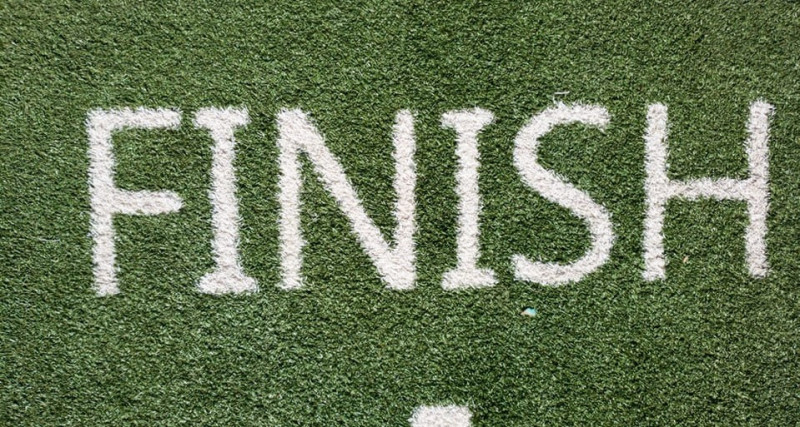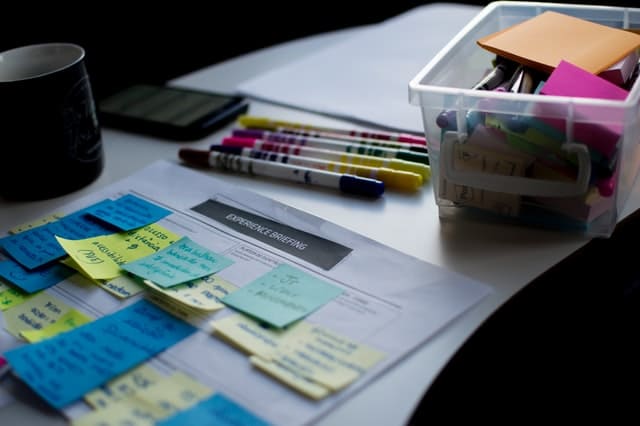
9 min
0
10.04.2022

There is nothing more exciting than starting a new project. At this initial stage, a lot of people are full of energy, great ideas, inspiration, and it may seem that this situation will continue like this forever. However, with time the moods can change. Boredom, the lack of novelty, procrastination, and basic distractions can get in the way of achieving your goals.
- Take a Break with Pomodoro Method
- Try the Funny Advice: Yawn and Stretch to Eliminate the Pressure
- Make It About Money
- Use Mobile Applications for Project Management
- Become a Finisher by Entering a Competition
- Develop an Incentive Scheme for a Project
- Get Advice from Someone You Consider an Expert
- Go Ahead and Try These in Practice!
If you found yourself struggling to finalize a big project or a startup, try these 7 easy techniques that will get you back on track.
Take a Break with Pomodoro Method

All of us heard about the benefits of taking breaks before we resume the work on the project that we are stuck at. It turns out that this is not merely a good simple strategy, but is a total must.
Scientific research from the University of Illinois psychology department and many other expert opinions cover this point. In Illinois, they led a study comparing two groups of students who worked on a project for 50 minutes per day. One group was allowed to take short breaks, another one was asked to work nonstop.
The results were astonishing: the nonstop group made on average more mistakes and declined productivity with every minute of the experiment. Surprisingly, the group that took regular breaks managed to stay focused and on-task for the entire duration.
To learn the art of small breaks, feel free to use the famous Pomodoro Method. Introduced by Francesco Cirillo, this method shows amazing results and is advised by the leading experts in time management.
Select a project you’re working on:
- Work uninterruptedly for 25-30 minutes.
- When the alarm sounds, take a 2–3-minute break.
- Repeat 4 sessions in this manner.
- After the 4th session, take a 20–30-minute break.
With this method, you’d be able to make few mistakes due to the lack of concentration, stay open to new ideas, reduce stress, and improve motivation.
Try the Funny Advice: Yawn and Stretch to Eliminate the Pressure

Whenever you feel stressed or under pressure from the extreme workload, stand up and stretch, finishing this practice with a couple of yawns, even if you don’t actually feel like yawning. The newest study in Adaptive Human Behavior and Physiology has proved that yawning can dramatically reduce stress and mental pressure.
When you feel stressed or anxious, your sympathetic nervous system increases body temperature and defaults the same happens to your brain. Yawning helps to stretch your jaw muscles and increase the blood flow into your brain, which reduces its temperature and helps you stay cool and focused.
Stretching your body in between mental work does not only send a relaxing signal to your brain. It also increases the blood supply and nutrients, which help fight fatigue and keep up with a positive attitude.
Make It About Money

Some people feel more motivated if they are about to make or lose money. This system of financial rewards can be used to our advantage. Make a deal with a friend to pay him or her $10 for every zero-day. A zero-day is a day when you do zero work on your project. You can also agree to pay $10 for every day that follows after your agreed deadline.
In case of a strong tendency to procrastinate, double the stakes. Promise to pay $50-$100 in one goes if you miss the set deadline. To make it a balanced decision, go for the amount that matters to you without overwhelming your budget.
The opposite side of this game is to ask someone to keep your money and give them back to you only once you accomplish your task.
Use Mobile Applications for Project Management

There are plenty of applications on the market designed to help you get things done by boosting your productivity and keeping work well-organized. The biggest benefit of such applications is that they help you deal with the complexity of large-scale main or side projects by dividing them into smaller and more tangible everyday tasks.
For example, the popular application Todoist promises to help you to carry out a project in 10 easy steps:
- Create a Todoist project.
- Start with the endpoint. What are you trying to achieve, and how the end goal should look like?
- Fill in your Todoist with all the tasks that will bring you closer to your goal.
- Organize your tasks into sections.
- Break down the most complicated tasks into smaller but more manageable ones.
- Add some references or a bibliography.
- Schedule your tasks using the tools for assigning priority and timeframes.
- If you are struggling to stay on track, create a recurring weekly task to review what was already done and what is the next step.
- Set alarms and reminders for the tasks that are easy to forget.
- Finish in the shortest amount of time.
Some other applications you can use to work on your next project are Basecamp, Asana, Trello, and Microsoft Project.
Become a Finisher by Entering a Competition

The lack of interest, procrastination, and motivation decline can negatively affect any working project. We recommend considering entering a competition to bring some life into it and cure the lack of initiative.
A stimulating and healthy competition can bring the elements of gamification to your daily routine. When the project you’re stuck with is approached as a game, it allows the stress to go down and the creativity to pop up. The winner’s instinct will most definitely push you to follow the self-appointed deadlines, stop postponing the tasks and get yourself to work.
The anticipation of the reward in the form of victory will create a positive incentive for you actually to start moving towards your goals. The types of competitions that you could enter are:
- A competition with a colleague or a friend on who finishes their project in less time.
- A competition at a thematic conference or another relevant institution with other participants.
- A competition on project quality with other participants in the field.
Develop an Incentive Scheme for a Project

Our brain is wired to look for incentives and work our way towards them. If you are stuck with a task you don’t want to do, promise to reward yourself on completion with something that will please you. A book that you’ve wanted to buy for a long time, a new pair of shoes, a movie night, or even a day trip in the countryside, there are no limits on what you can wish for.
You may reward yourself with one big gift for every completed project or create a set of small rewards for each crossed to-do thing on your list. The second approach is more suitable for people with a history of procrastination problems. It tackles both the tendency to postpone work for an uncertain period and the struggle to finish a creative project based on the lack of interest and motivation or stress.
A good example of a small reward after each accomplished task can be:
- A piece of your favorite chocolate or a healthy snack
- A walk in the park
- A brief phone call with your family or friends
- A preview of an inspirational video on YouTube
Again, the list is highly individual and also must consider restrictions imposed in light of pandemics.
In addition to rewards upon completion, you can try and reward yourself for every time you start working on a task, for every time you write down a new task, or for every time you conduct a progress review or evaluation.
Get Advice from Someone You Consider an Expert

Procrastination or lack of motivation is not the only reason for being stuck. More often than not, we struggle to finish the project because of our uncertainty about where we are heading and how to get there. The doubts of perfectionists to successfully finish the project combined with the fear of criticism or failure can keep them away from getting things done.
The number one solution to get out of the cycle of negative thinking is to get another opinion. A trusted teacher in school, a professor in college, a family friend with a background in your topic, a colleague, or even your role model on social media: try and look for anyone who knows something about the substance of your project idea and could share their experience. Some good advice from experienced people will reassure you to move forward and help you answer the questions you may have about the process.
The conversation about your work will help you clarify your goals, but it can also make you inspired and give some fresh ideas on how to finalize the project with better results. Enthusiasm is contagious. Surround yourself with positive and productive people with similar interests. They will motivate you to finish even the hardest project.
Go Ahead and Try These in Practice!
These 7 easy techniques to help you successfully finish projects can be used separately or together to maximize the results. Choose the ones that you liked the most and start implementing them in real life starting from today.



